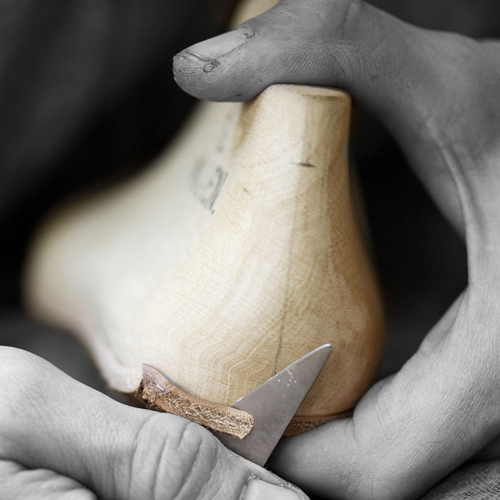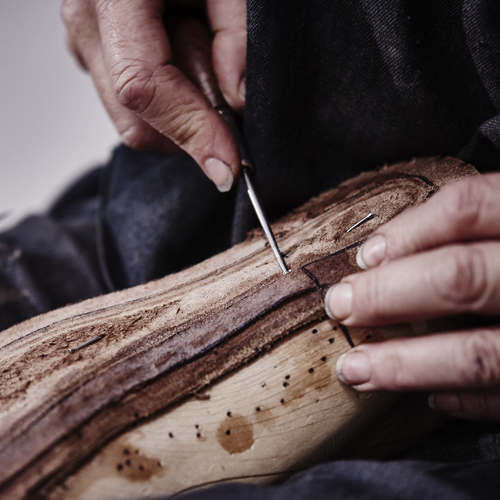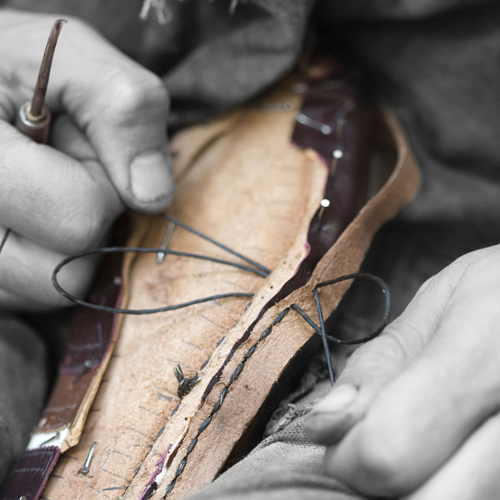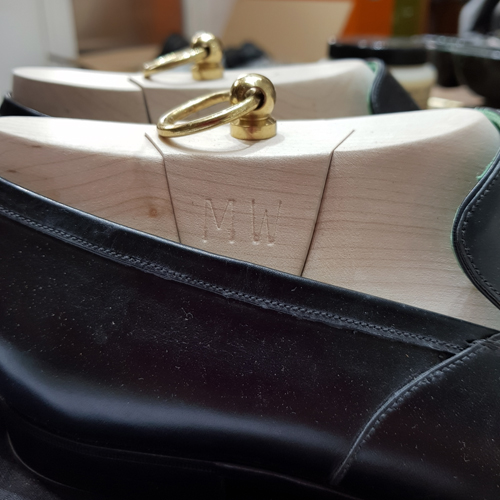Our bespoke shoes have excellent sustainability credentials and provenance.
With regular care and repair our bespoke shoes are designed to last a lifetime; we build the shoes from UK-sourced, oak bark tanned leather and work primarily in naturally vegetable tanned leathers from artisanal tanneries in Italy; we work with a local network of highly-skilled specialist last makers, pattern makers and closers (who sew the uppers); and we hand sew the shoes in our workshop in London’s iconic Oxo Tower, before they are finished by one of our specialist UK manufacturers.

Our Bespoke Manufactured service combines the best of handsewn shoemaking with specialist manufacturing techniques to offer you a wide choice of shoe and boot styles.
There is much similar to our Bespoke Handsewn service; the leather components are cut from English oak-bark tanned hides from J&FJ Baker of Colyton, Devon in England. Founded in 1862, Bakers make some of the best oak bark, pit tanned leathers in the world, leather that is hard wearing, but lightweight and responsive and which, in time, delivers a ‘fits-like-a-glove’ experience.

The leather insole is shaped to the last and, if the shoe is to be welted, a ridge (or holdfast) is cut around the edge and stitch holes are punched through using a sharp awl.

The heel stiffeners are thinned out around the edges and pasted in place between the upper and lining before the upper is stretched over the last and nailed to the insole. The lining is lasted at the toe, a toe puff (a thinned piece of leather that gives the toe strength) is pasted in place and the upper is lasted over.

Now the shoes are checked to ensure that the design is straight, that the shoes match and the measurements are correct, before we hammer the uppers to smooth and shape them. Then the shoes are left to sit on the last for several days to take its shape.

If the style is welted construction, the welt is now stitched in place. (It’s a strip of leather sewn around the edge of the shoe with threads made from waxed, twisted hemp or linen thread; the welt stitching goes through the insole, upper material and the welt).

A tough piece of leather (a shank) is glued into the arch of the shoe for support and strength and the front of the shoe is filled with cork for stability and comfort.

The soles on lighter-weight styles such as slippers, slip ons or loafers are cemented or blake stitched in place, before a leather heel is attached. On heavier styles a leather sole is machine stitched to the welt, the heel is attached and then, if required, a durable rubber commando or serac sticker sole is attached.

The shoe edges are now smoothed and shaped on a sanding machine before being dyed, waxed and buffed to a shine and the bottoms are sealed, dyed or polished and buffed to seal them too.
Lasts and trees

If you choose to have shoe or boots trees they are made to your measurements by Spring Line in Northampton. Their experienced last makers work carefully with your finished bespoke shoes and lasts to create the trees. We believe that trees are important because they help with the longevity of your shoes, to keep them looking good. Each pair of easy-to-remove, three-piece trees is personalised with your initials and a brass ring pull.
